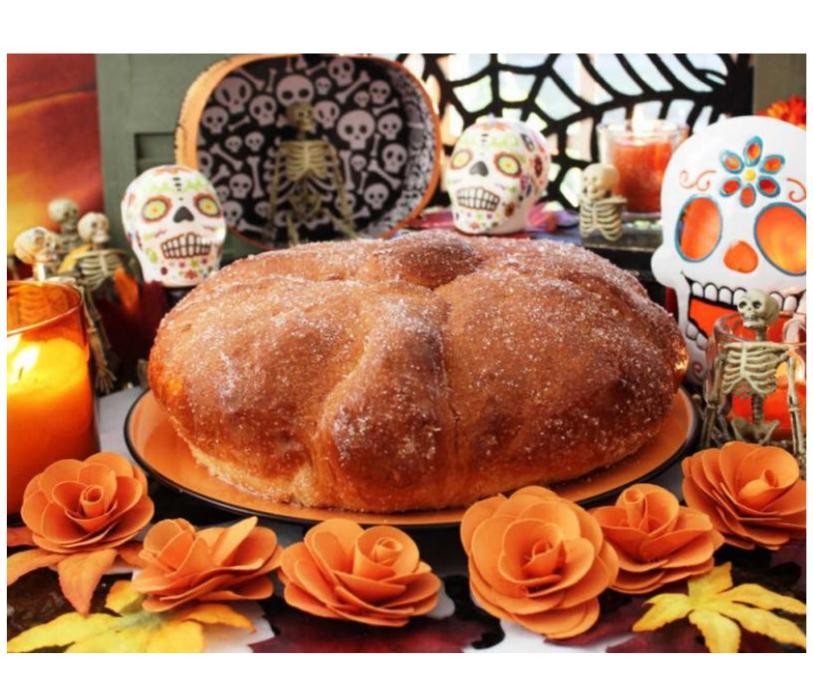By Dan and Lisa Goy from the January 2017 Edition
San Miguel de Allende – Day 71 to 73 (March 17-19, 2016)
Thursday morning was sad as we said goodbye to 3 couples who had started our Mexican Adventure with 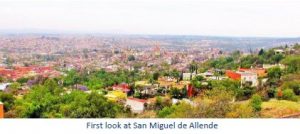 us; Bruce and Marian, Rafael and Eileen and Grant and Anita. Eileen’s mom had fallen and broken her hip, Marian’s mom had been diagnosed with a terminal illness so the decision was made to cut short the Mexican Adventure and head home. The three couples had travelled together from BC to meet everyone in Texas and so they decided to leave the tour the same way. They were off early heading for Guadalajara. We left later in the morning on Hwy 57. Heading for San Miguel de Allende from Queretaro, this was a relatively short drive.
us; Bruce and Marian, Rafael and Eileen and Grant and Anita. Eileen’s mom had fallen and broken her hip, Marian’s mom had been diagnosed with a terminal illness so the decision was made to cut short the Mexican Adventure and head home. The three couples had travelled together from BC to meet everyone in Texas and so they decided to leave the tour the same way. They were off early heading for Guadalajara. We left later in the morning on Hwy 57. Heading for San Miguel de Allende from Queretaro, this was a relatively short drive.
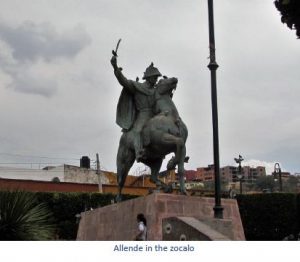 We arrived before lunch and stayed at the San Ramón RV Park and Hotel. This was a great campground at $300 pesos per day, very clean, lots of grass, a pool, wifi that worked well and, as a bonus, the public bus stopped out front of where we were staying with only a 12-minute ride into town. We had expected our friends, Robert and Jomi to be there but they already left for the Pacific coast. After taking the public bus into town, we hopped on a tourist trolley around town and did lots of walking as well.
We arrived before lunch and stayed at the San Ramón RV Park and Hotel. This was a great campground at $300 pesos per day, very clean, lots of grass, a pool, wifi that worked well and, as a bonus, the public bus stopped out front of where we were staying with only a 12-minute ride into town. We had expected our friends, Robert and Jomi to be there but they already left for the Pacific coast. After taking the public bus into town, we hopped on a tourist trolley around town and did lots of walking as well.
Having learned about a community event, we were lucky enough to catch a children’s parade the next day and a wedding in the main square that evening. There is just so much to see and do, it is hard to know where to start. During our short stay, we returned to the main square (zocalo) a couple of times and visited the Art Centre which had been a textile mill.
Eating out for lunch and dinner was routine during our stay in San Miguel, the food always good and 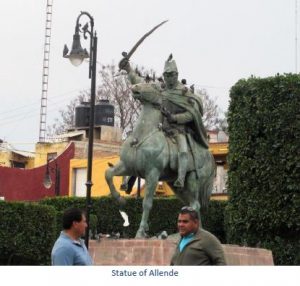 reasonably-priced. The restaurants always so “San Miguel” in their décor, appearance and cultural fit (perhaps not the best description). Although our stay was brief, our experience told us that returning would be inevitable. This was one of our favourite stops.
reasonably-priced. The restaurants always so “San Miguel” in their décor, appearance and cultural fit (perhaps not the best description). Although our stay was brief, our experience told us that returning would be inevitable. This was one of our favourite stops.
The day before we left, the Mexico City RV Club showed up at the campground. Apparently, they have been a club for many years and travel around different parts of Mexico for rallies and get together just like back home in Canada and the US. There were about 15 RVs in total, mostly travel trailers. We also met Mike and Terri Church (Rolling Homes Press) at the campground before we left. They were traveling with a small group of friends and had been a couple of days behind us on tour for a few weeks. It was good to catch up with them. We thought we may see them again next season on Baja.
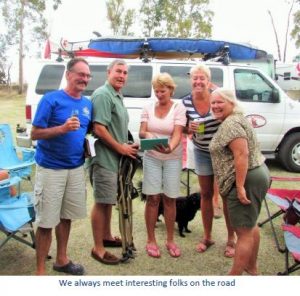 The day we left San Miguel de Allende heading for Guanajuato, we first stopped into Dolores Hidalgo to check out the pottery shops. We had never seen anything like this, wow.
The day we left San Miguel de Allende heading for Guanajuato, we first stopped into Dolores Hidalgo to check out the pottery shops. We had never seen anything like this, wow.
San Miguel de Allende has been written about extensively and it appears we are continuing that tradition. We really cannot say enough about the museums, markets, restaurants, theaters and just the beautiful layout of the town itself. Today’s city really got started in the late 1930s and early 1940s, when the town began to attract artists and writers.
The city took on a Bohemian quality in the 1960s and 1970s as counterculture hippies moved in. The city and nearby sanctuary were declared a World Heritage Site when UNESCO met in Quebec, Canada in July 2008. It was chosen, both for its well preserved Baroque colonial architecture and layout, as well as its role in the Mexican War of Independence. The area that was inscribed includes 64 blocks of the historic center and the sanc-tuary of Atotonilco with the title of “Villa Protectora de San Miguel el Grande y el Santuario de Jesus Nazareno de Atoonilco.”
San Miguel de Allende (Spanish pronunciation: [san mi’ɣel de a’ʎende]) is a city and municipality located in 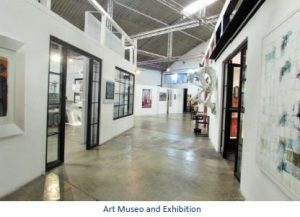 the far eastern part of the state of Guanajuato, in central Mexico. It is part of the macroregion of Bajío. It is 274 km (170 mi) from Mexico City and 97 km (60 mi) from the state capital of Guanajuato. Historically, the town is important as being the birthplace of Ignacio Allende, whose surname was added to the town’s name in 1826, as well as the first municipality declared independent of Spanish rule by the nascent insurgent army during the Mexican War of Independence.
the far eastern part of the state of Guanajuato, in central Mexico. It is part of the macroregion of Bajío. It is 274 km (170 mi) from Mexico City and 97 km (60 mi) from the state capital of Guanajuato. Historically, the town is important as being the birthplace of Ignacio Allende, whose surname was added to the town’s name in 1826, as well as the first municipality declared independent of Spanish rule by the nascent insurgent army during the Mexican War of Independence.
The city has been known by various names since the Spanish founded the settlement. It was called Izcuinapan by the indigenous peoples. The Spanish originally called it San Miguel el Grande and sometimes San Miguel de los Chichimecas. San Miguel refers to the founder of the city, Father Juan de San Miguel. The name of the town was changed in 1826 to San Miguel de Allende 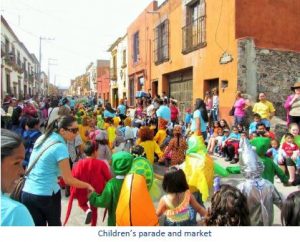 in order to honor Ignacio Allende, who was born here. The surrounding municipality is officially called Allende, both seat and municipality are called San Miguel (de Allende). The municipality has a coat of arms that was designed by a group called Amigos de San Miguel, but it has not been officially recognized.
in order to honor Ignacio Allende, who was born here. The surrounding municipality is officially called Allende, both seat and municipality are called San Miguel (de Allende). The municipality has a coat of arms that was designed by a group called Amigos de San Miguel, but it has not been officially recognized.
Before the arrival of the Spanish in the early 16th century, there had been an indigenous settlement at Izcuinapan (place of dogs). A small chapel was built and a village started near the indigenous village by Juan de San Miguel. He decided to dedicate the Spanish town to the Archangel Michael. However, the arrival and colonization provoked the locals. The Chichimecas began attacking Spanish travelers in the area and, in 1551, the Guamare people attacked the village proper. This and continuous water supply problems caused the original location to be abandoned and moved.
The village was officially reestablished in 1555 by Juan de San Miguel’s successor, Bernardo Cossin and 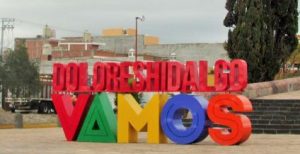 indigenous leader Fernando de Tapia. It was re-founded both as a mission and as a military outpost. The new site was just northwest of the old one at a place with two fresh water springs (called Batan and Izcuinapan) and with terrain better suited for defense. The two springs supplied all of the town’s water until the 1970s. Today, this second site is occupied by the Santa Escuela Church, which colloquially became known as the “old parish” by the 18th century.
indigenous leader Fernando de Tapia. It was re-founded both as a mission and as a military outpost. The new site was just northwest of the old one at a place with two fresh water springs (called Batan and Izcuinapan) and with terrain better suited for defense. The two springs supplied all of the town’s water until the 1970s. Today, this second site is occupied by the Santa Escuela Church, which colloquially became known as the “old parish” by the 18th century.
By the mid 16th century, silver had been discovered in Zacatecas and a major road between this area and Mexico City passed through San Miguel. Indigenous attacks on caravans continued and San Miguel 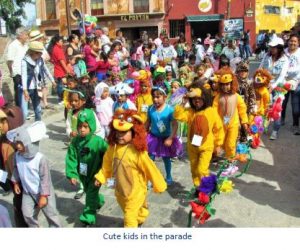 became an important military and commercial site. To quell these attacks, as well as rebellions against Spanish rule, the viceroy in Mexico City granted lands and cattle to a number of Spanish to have them settle the area. He also gave indigenous groups limited self rule and excused them from taxation. The location of the town would make the town a melting pot as Spanish, indigenous peoples and later Criollos would exchange cultural influences.
became an important military and commercial site. To quell these attacks, as well as rebellions against Spanish rule, the viceroy in Mexico City granted lands and cattle to a number of Spanish to have them settle the area. He also gave indigenous groups limited self rule and excused them from taxation. The location of the town would make the town a melting pot as Spanish, indigenous peoples and later Criollos would exchange cultural influences.
Eventually, major roads would connect the town with the mining communities in San Luis Potosí as well as Zacatecas and the rest of the state of Guanajuato. Serving travelers’ needs and providing supplies to mining camps made the town rich. One particular industry was textiles. Locals claim that the serape was invented here.
By the mid 18th century, the city reached its height, when most of its large mansions, palaces and religious 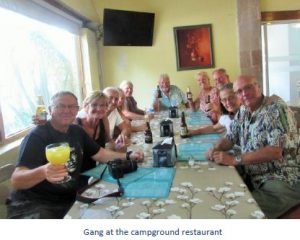 buildings were constructed. Most still remain. The town was also home to the area’s wealthy hacienda owners. At that time, it was one of the most important and prosperous settlements in New Spain with a population reaching 30,000. In comparison, in the mid 18th century, Boston had a population of only 16,000 and New York 25,000. The town’s apogee came during the transition period between Baroque and Neoclassical architecture and many of the mansions and churches have both influences. Mansions are larger than normal for a settlement of this size.
buildings were constructed. Most still remain. The town was also home to the area’s wealthy hacienda owners. At that time, it was one of the most important and prosperous settlements in New Spain with a population reaching 30,000. In comparison, in the mid 18th century, Boston had a population of only 16,000 and New York 25,000. The town’s apogee came during the transition period between Baroque and Neoclassical architecture and many of the mansions and churches have both influences. Mansions are larger than normal for a settlement of this size.
The Historic Center
At the entrance of the city are statues of Ignacio Allende, Juan Aldama, Miguel Hidalgo and Josefa Ortiz de Dominguez, with one of the Archangel Michael in the center. While the outlying areas of the town and 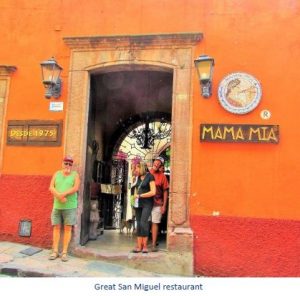 municipality have changed over time, the historic center remains much as it was 250 years ago. The lay-out of the center of the city is mostly a straight grid, which was favored by the Spanish during colonial times. However, due to the terrain, many roads are not straight.
municipality have changed over time, the historic center remains much as it was 250 years ago. The lay-out of the center of the city is mostly a straight grid, which was favored by the Spanish during colonial times. However, due to the terrain, many roads are not straight.
There are no parking meters, no traffic signals and no fast food restaurants. These roads are lined with colonial era homes and churches. With a few exceptions, the architecture is domestic rather than monumental, with well-tended courtyards and rich architectural details. The houses have solid walls against the sidewalks, painted in various colors, many with bougainvillea vines falling down the outside and the occasional iron-grated window. Many of the larger structures have large front doors which used to be used by horses and carriages.
La Parroquia de San Miguel Arcángel, the current parish church of San Miguel, is unique in Mexico and the 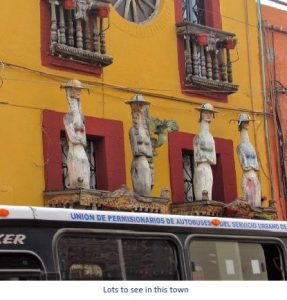 emblem of the town. It has a Neogothic façade with two tall towers that can be seen from most parts of town and one of the most photo-graphed churches in Mexico. The church was built in the 17th century with a traditional Mexican façade. The current Gothic façade was constructed in 1880 by Zeferino Gutiérrez, who was an indigenous bricklayer and self-taught architect. It is said that Gutiérrez’s inspiration came from postcards and lithographs of Gothic churches in Europe; however, the interpretation is his own and is more a work of imagination than a faithful reconstruction.
emblem of the town. It has a Neogothic façade with two tall towers that can be seen from most parts of town and one of the most photo-graphed churches in Mexico. The church was built in the 17th century with a traditional Mexican façade. The current Gothic façade was constructed in 1880 by Zeferino Gutiérrez, who was an indigenous bricklayer and self-taught architect. It is said that Gutiérrez’s inspiration came from postcards and lithographs of Gothic churches in Europe; however, the interpretation is his own and is more a work of imagination than a faithful reconstruction.
However you get to San Miguel de Allende, RV, Bus, Plane or Automobile you should make the journey and spend some time here. We will be back.
Download the full edition or view it online
Dan and Lisa Goy, owners of Baja Amigos RV Caravan Tours, have been making Mexico their second home for more than 30 years and love to introduce Mexico to newcomers.



